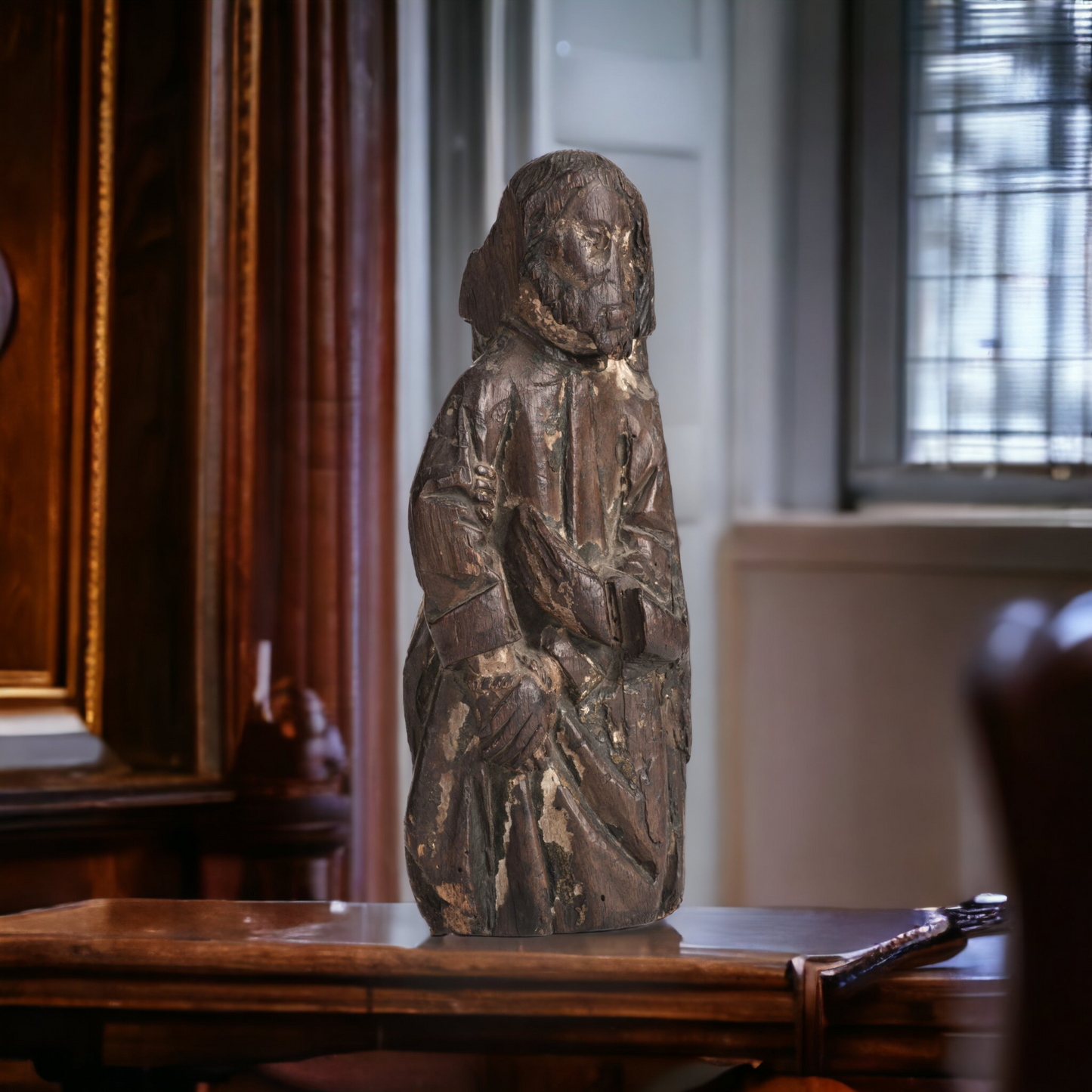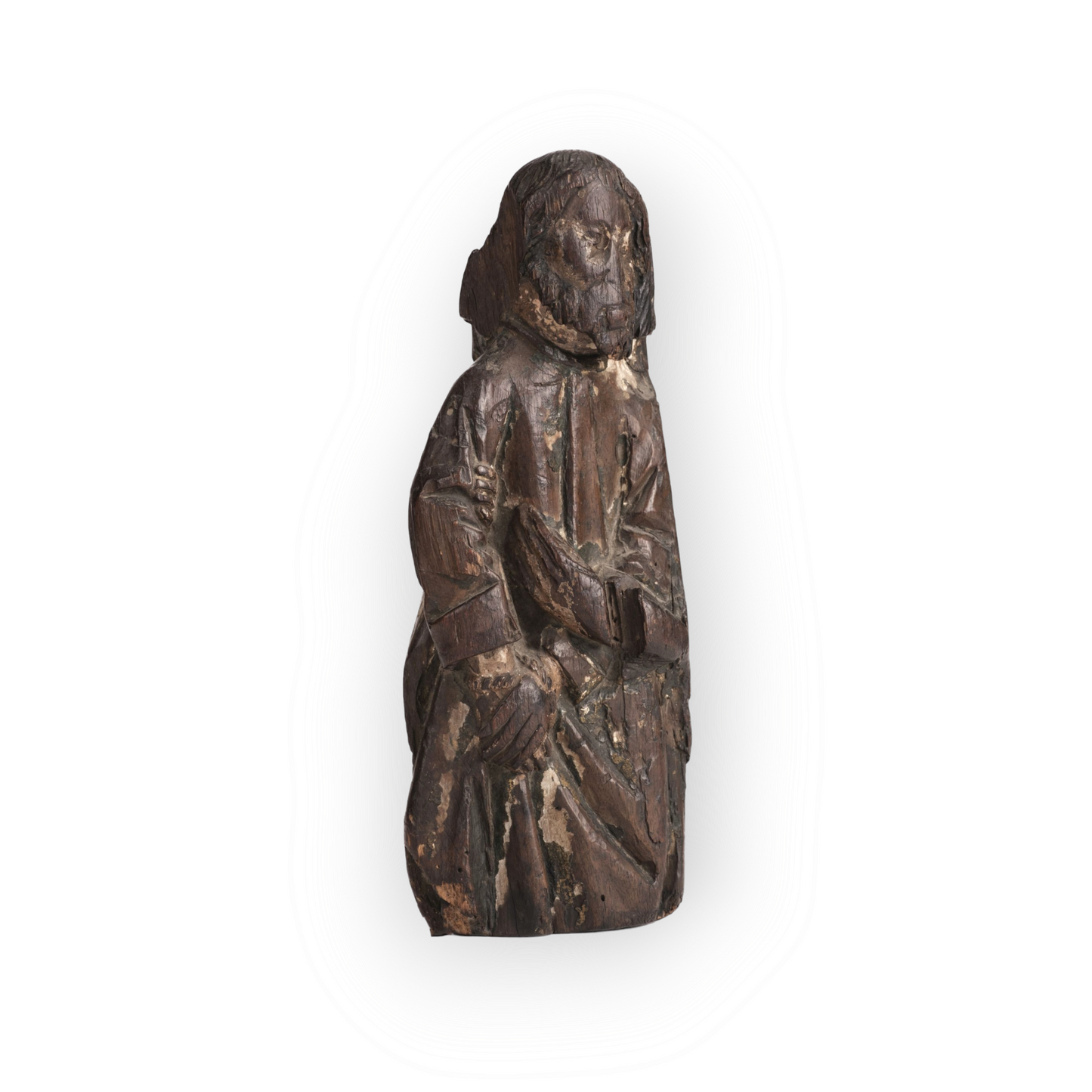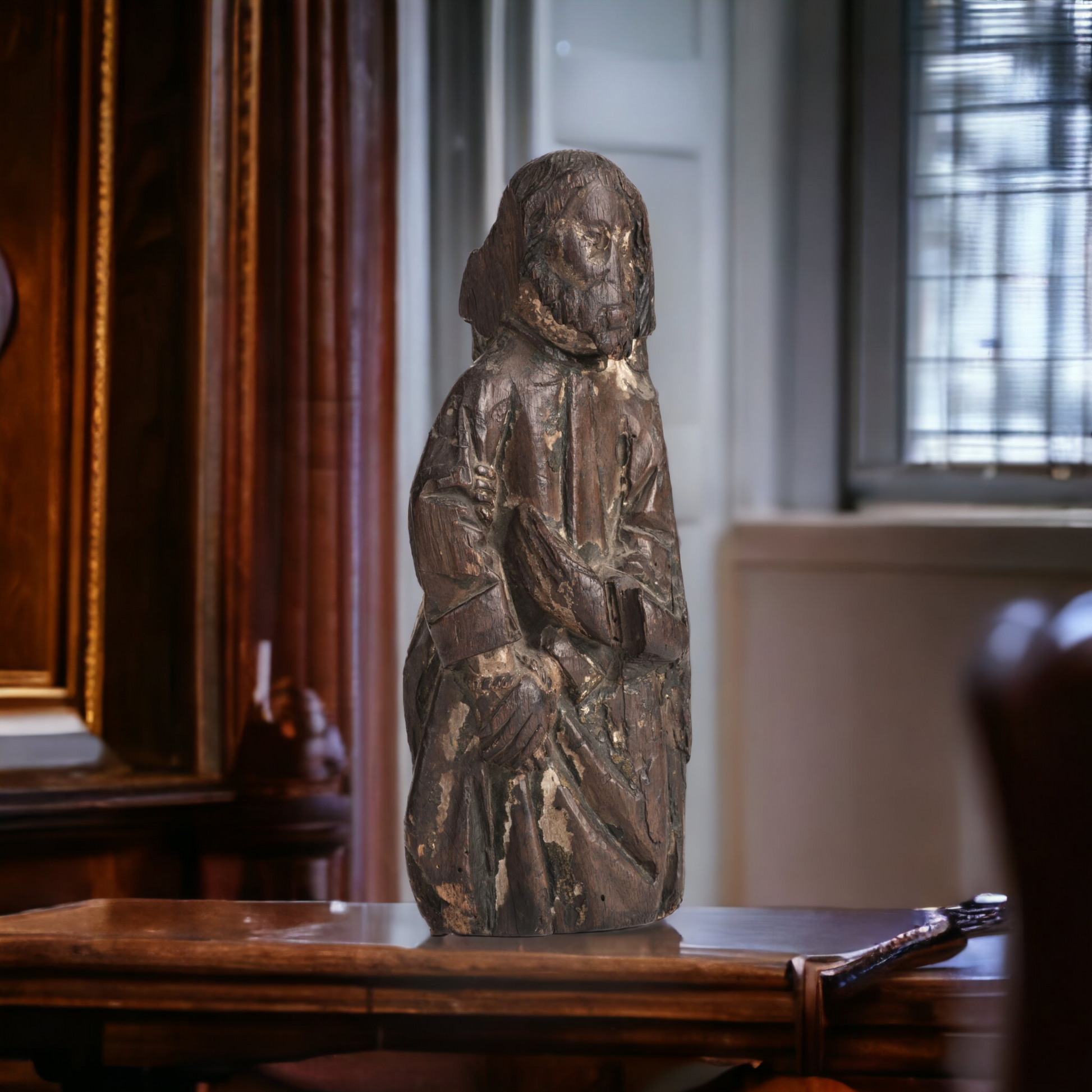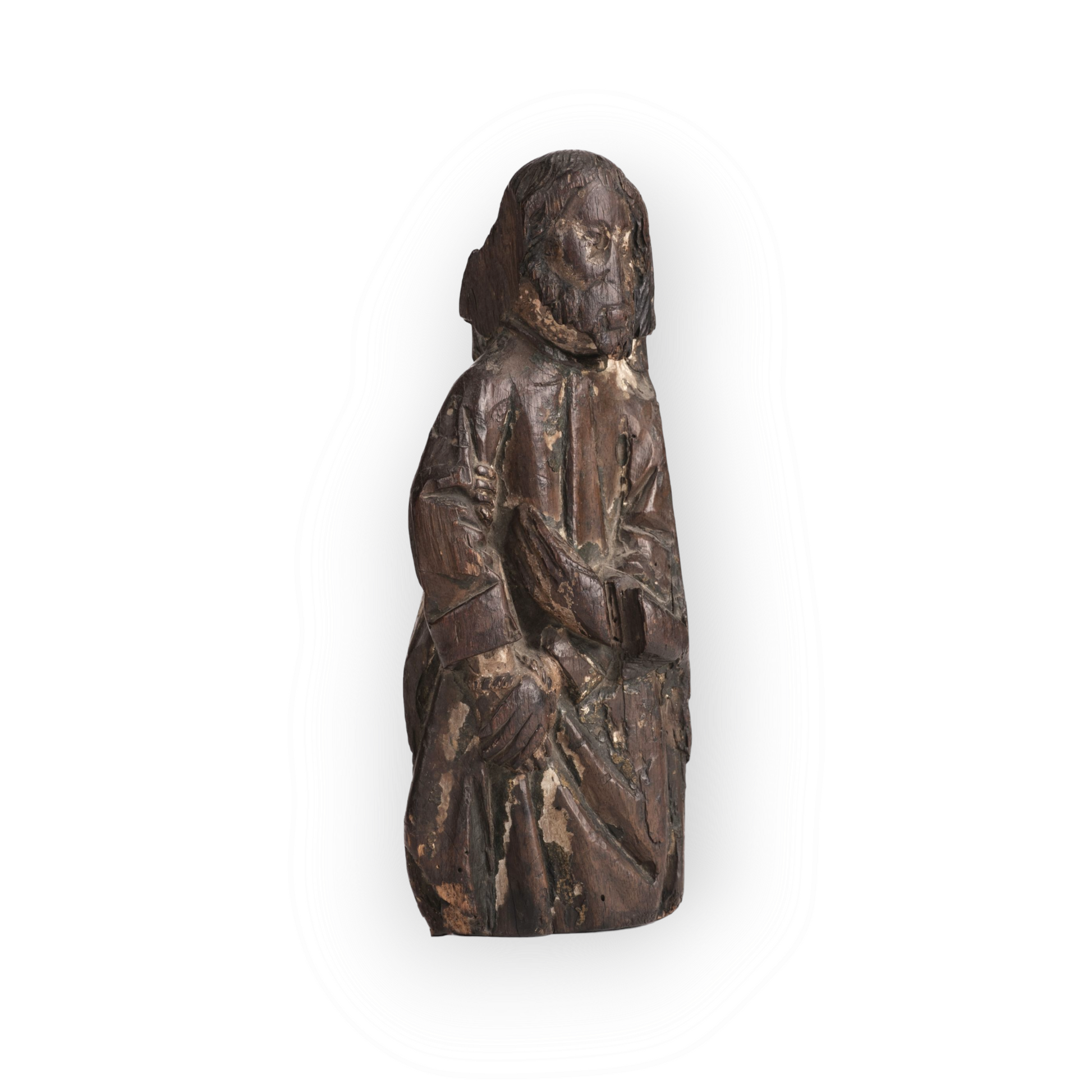Holt Antiques at Walsingham Mill
Ex-Downside Abbey, Somerset, England - A Diminutive 16th Century Flemish Antique Carved Oak Figure of a Saint
Ex-Downside Abbey, Somerset, England - A Diminutive 16th Century Flemish Antique Carved Oak Figure of a Saint

Couldn't load pickup availability
A modestly proportioned 16th Century Flemish antique carved oak sculpture of a Saint.
Portrayed with a beard and wearing robes and a cloak.
Provenance: Formerly in the contents of Downside Abbey, Somerset, England.
History of Downside Abbey:
Downside Abbey is the senior Benedictine monastery of the English Benedictine Congregation. Originally founded in Douai, in 1606, the community of St Gregory the Great settled at Downside in 1814.
Douai, in 1606, was part of the Spanish Netherlands and the English Catholics, who were given sanctuary there, were escaping anti-Catholic legislation in England, following the Dissolution of the Monasteries from 1530.
St Gregory’s, Douai, was the first community of men to revive the English Benedictine tradition. Its founders organised a school for English boys, and provided a base for Benedictine run parishes or missions in England.
By 1794, Douai was being supressed by the French Revolutionaries who were at war with Great Britain, and the Monastery and School were temporarily rehoused at Acton Burnell Hall in Shropshire, the home of a former pupil. Mount Pleasant, in Somerset, was purchased during this time (as another temporary home), with the community moving in 1814.
The early years at Downside were uncertain: France was still an attractive option, school (and monastic) numbers were low and the local Catholic bishop, Augustine Baines, despite being a Benedictine himself, was hostile. Nevertheless, within a decade the community had adjusted to their life at Downside, and by 1823 had opened a chapel and new school buildings; designed by Henry Goodridge in the Gothic style to recall medieval monastic life.
During the 19th-century monastic numbers increased, whilst the community worked on ‘missions’ around industrial England, centres included Liverpool, Warrington, Whitehaven, and South Wales. Abroad the community forged links with New South Wales: the two first Archbishops of Sydney were former Downside monks; Bede Polding and Bede Vaughan. By 1900 most of the missions had transferred to diocesan clergy, with the exception of Little Malvern and East Anglia, which both remain as Downside parishes today.
Condition - as per images. Surface wear is commensurate with age. Please refer to the images. A further condition report is available upon request.
Size: Height 23 cm (9")
We ship worldwide! You can buy with 100% confidence too!
We are a member of the following 4 Professional Institutions:
1. LAPADA (London and Provincial Antique Dealers Association) – LAPADA is the UK’s largest trade association for professional art & antique dealers (representing approximately 500 UK dealer members). All items are backed by our LAPADA guarantee;
2. CINOA –Confédération Internationale des Négociants en Oeuvres d'Art, (or International Confederation of Art and Antique Dealers' Associations) is the world association of art & antique dealer associations (representing 5000 dealers from 32 associations in 22 countries);
3. The Norfolk & Suffolk Antique Dealers Association - Representing reputable, high quality antiques dealers based in Norfolk and Suffolk; and
4. FSB - Federation of Small Business.
Wish to purchase this item?
1. Buy online via this website; OR
2. Tel: 00 44 7551 383897 (line open 9.30 am to 5.30 pm Monday to Saturday UK time) where we can take payment over the phone.
Want further information about an item or wish to discuss shipping costs?
1. Email us via this website; OR
2. Email us via:
info@holtantiquefurniture.com
We will aim to respond and make contact with you within 24 hours of receipt of your enquiry.
Share




